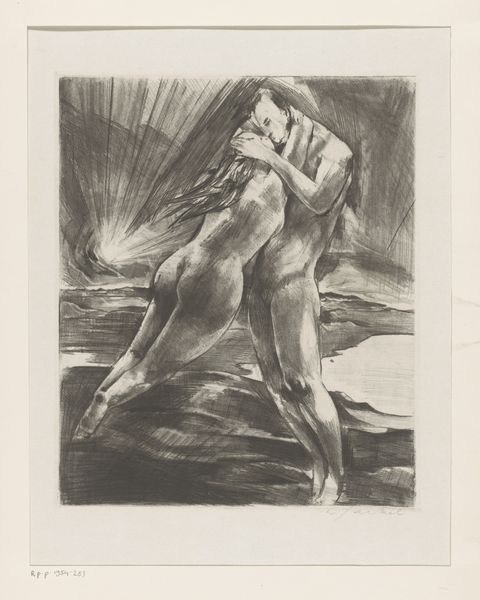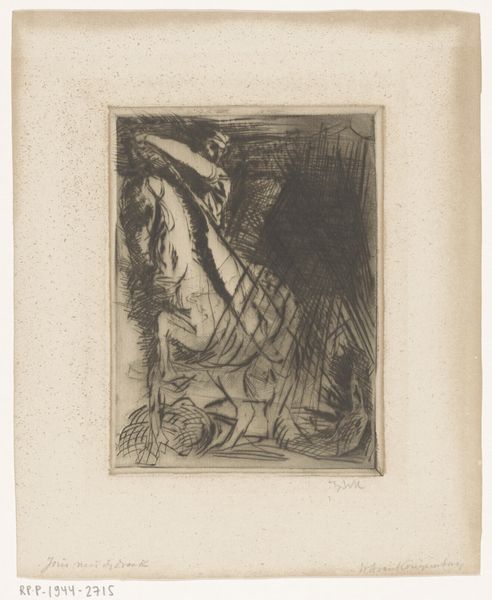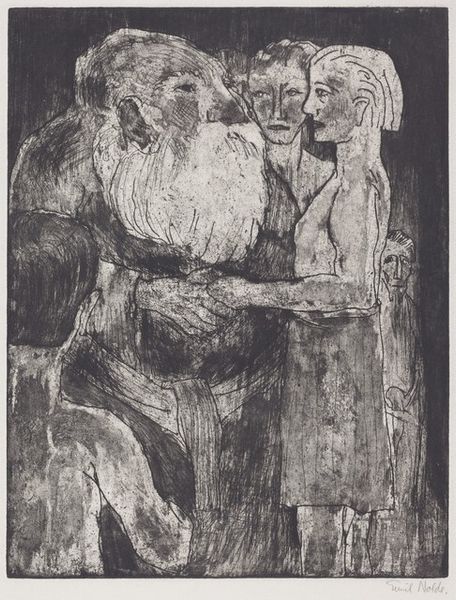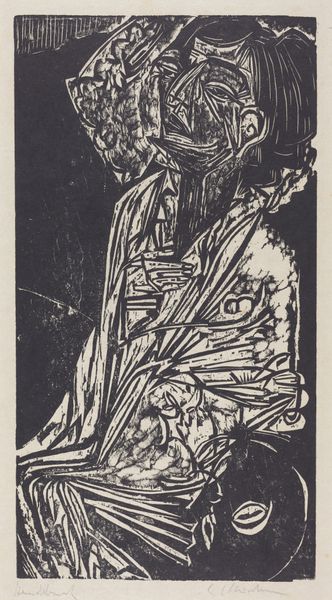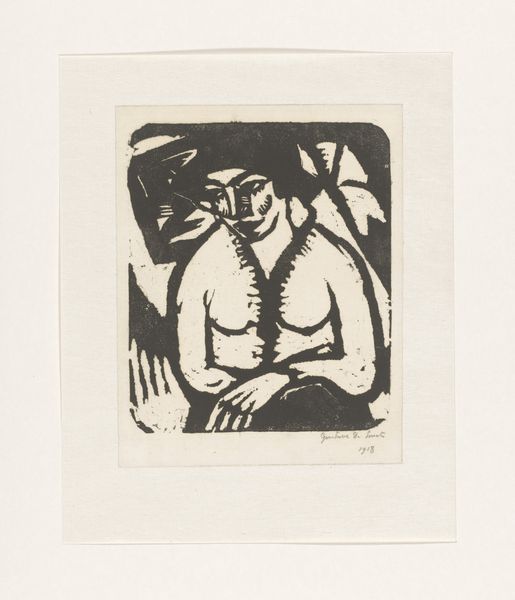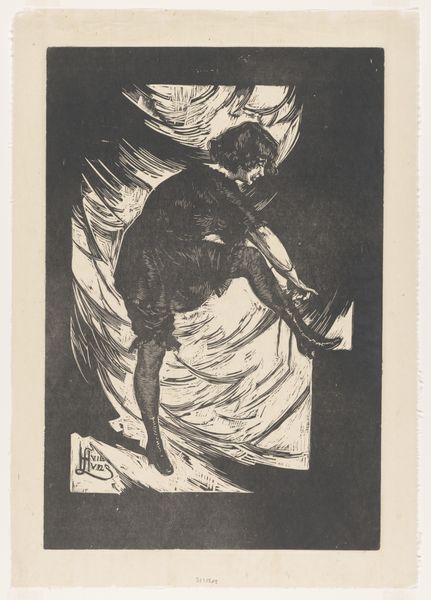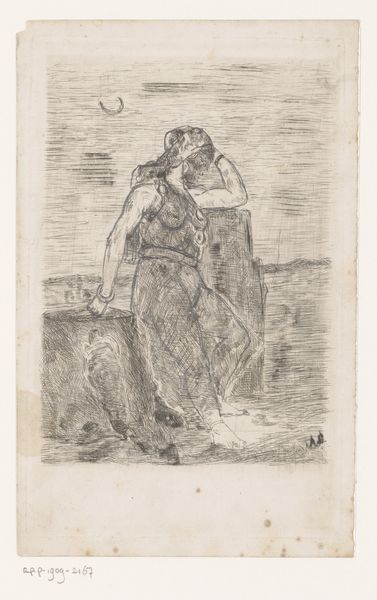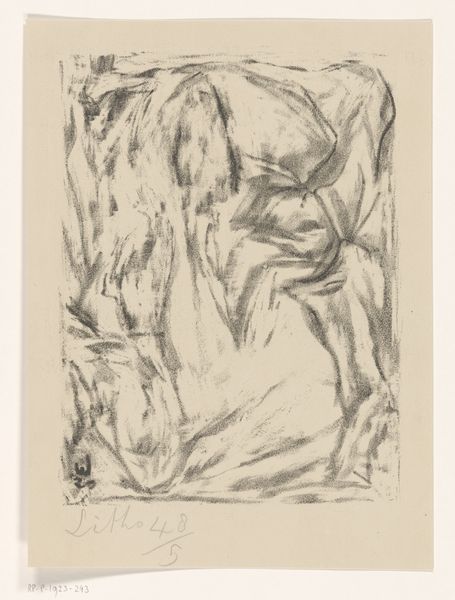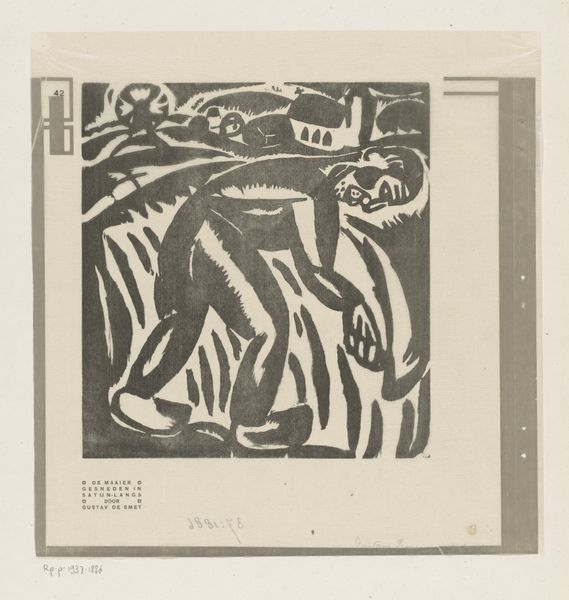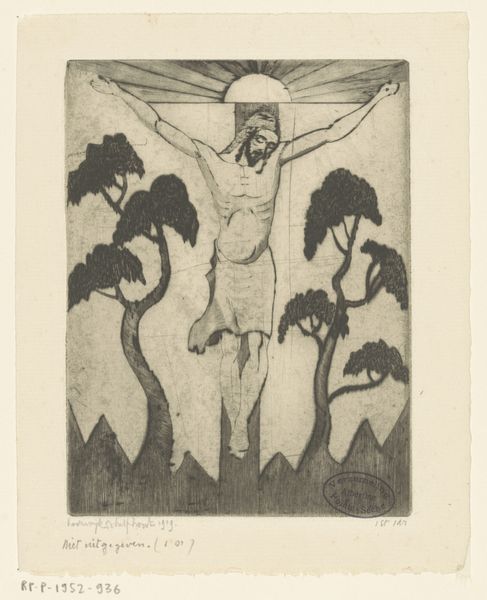
print, etching
# print
#
etching
#
landscape
#
caricature
#
figuration
#
pencil drawing
#
expressionism
Dimensions: height 489 mm, width 403 mm
Copyright: Rijks Museum: Open Domain
Curator: Here we have Lodewijk Schelfhout's "Christus op de Olijfberg," or "Christ on the Mount of Olives," an etching from 1924, now residing here at the Rijksmuseum. My first thought is how powerfully this image communicates solitude. Editor: Solitude, yes, but also an almost palpable weight of anguish. You see it etched in the lines around Christ’s eyes, in the heavy, almost burdensome, texture of the foliage around him. There’s something deliberately rough, almost crude, about the technique that really reinforces the raw emotion. Curator: I'm particularly struck by the angel appearing almost ethereally in the background, set against the dark trees. It speaks to the internal conflict and struggle with faith. We must consider this through the lens of Expressionism; what spiritual and social anxieties are present at this time and what is Schelfhout’s statement on such angst? Editor: Right. It's an etching, of course, and consider how that choice of material impacts the final piece. The deep, biting lines allowed by the etching process give a tangible quality to this moment of intense, interior distress. Schelfhout forces us to confront the sheer physical effort and process, underlining a brutal reality. Curator: I agree, and also the positioning of Mary Magdalene seems critical here; is this a portrayal of female grief or an observation of support that’s rooted in both spiritual and social bonds? It offers insight into relationships and roles within that historical context. The composition also seems to force this feeling upon its audience by depicting them close together. Editor: The materials, and the artist's use of them, aren't merely representative, though; they actively contribute to meaning. How fascinating it is that printmaking becomes the chosen process to represent such internal feelings. This choice shows it's ready for mass distribution in the modern age. Curator: Precisely. Looking at this today, I see a timeless exploration of the burden of belief. Editor: I am more impressed with how it showcases the human capacity to make something, anything, that's just raw and revealing.
Comments
No comments
Be the first to comment and join the conversation on the ultimate creative platform.


